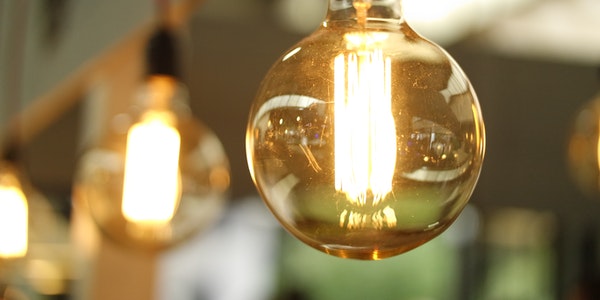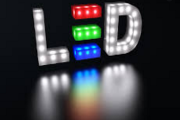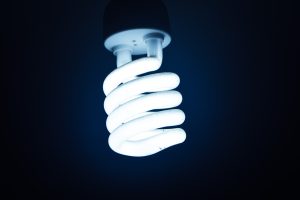Causes of Stroboscopic Flicker
While the electric light source brings light to mankind, it also brings new harm to mankind due to the stroboscopic effect of the electric light source, namely the stroboscopic effect.
The fundamental technical countermeasure to improve the electric light source stroboscopic is to increase the driving electric power frequency for driving the electric light source luminous body to emit light to reach above 40KHz.
From a macro-technical point of view, there are many measures to increase the frequency of driving electric power for driving the luminous body of the electric light source to emit light, but at this stage, some technical measures are simply impossible to achieve, or the implementation cost is relatively high.
The most likely, most economical, and most effective way is to choose a new type of electric light source with AC-DC-AC (AC-DC-AC) frequency conversion function. Therefore, HID light sources started with inductive ballasts inevitably have a stroboscopic effect, but in order to reduce the stroboscopic effect of using inductive ballasts, the allowable deviation of the power supply voltage can only be controlled as much as possible (as there are not many light sources in parallel on a road) (Up to 4, etc.), allowable frequency deviation, grid harmonics and allowable unbalance of three-phase voltage.
Today’s electronic technology perfectly applies the AC-DC-AC frequency conversion function in low-power HID electronic ballasts. There are still some problems in high-power electronic ballasts that have not yet been resolved. Therefore, in low-power HID lamps, most manufacturers now recommend that users use electronic ballasts to improve the stroboscopic effect of the light source.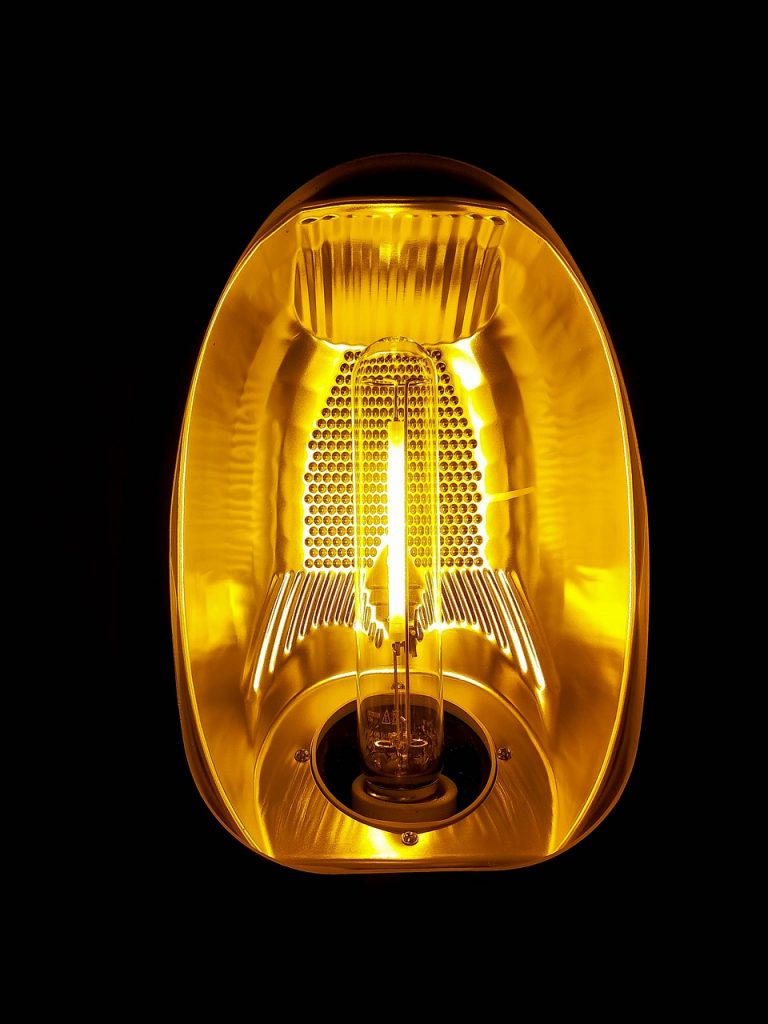
The Advantages of Ceramic Metal Halide lights
1. Long light source life (9000-15000 hours)
Generally speaking, low-power quartz metal halide lamps have a lifespan of 6000-9000 hours, while ceramic metal halide lamps have the above advantages, so their lifespan can reach 9000-15000 hours, which is 30% longer than traditional quartz metal halide lamps- 50%.
2. Higher luminous efficiency (>90 lm/w)
At present, due to the global energy crisis, people attach great importance to the effective use of energy, and the same is true in the lighting industry.
In recent years, the concept of green lighting is proposed in response to the effective use of energy. Therefore, although tungsten halogen lamps and incandescent lamps have excellent color rendering properties, their heat energy is severely lost during the ignition process and their lifespan is short. Obviously it is not an ideal green lighting product. The high luminous efficiency of the ceramic metal halide lamp can more effectively improve energy utilization and reduce the owner’s use cost. Its luminous efficiency is two to three times higher than that of halogen tungsten lamps and incandescent lamps. At the same time, in terms of light and color performance, it is far better than the quartz metal halide lamp. It is a new type of light source that combines excellent light and color performance and high luminous efficiency.
3. The color temperature stability is good during the life (between +/-200K), and the color temperature consistency between light sources is better. The color temperature of the ceramic metal halide lamp changes within 200K from ignition to the end of its life. In general, the color temperature change of the quartz metal halide lamp during its life is greater than 600K, so the ceramic metal halide lamp solves the problem of the color difference and the drift of the color temperature of the quartz metal halide lamp.
4. Stable lumen output
The lumen output of the light source will decay over time. The lumen output of ceramic metal halide lamps is the highest among low-power metal halide lamps. The lumen output at the beginning of its life is 10-20% higher than that of a general quartz metal halide lamp. More importantly, it can maintain such a level of light source output until the end of its life. The lumen maintenance rate of ceramic metal halide lamps is above 80%, while that of quartz metal halide lamps is 60-65%, and its light decay is faster.
5. Light source geometry size is more compact
It can be compatible with the lamps and electrical appliances of the existing quartz metal halide lamps, and is easy to promote and apply. And because the luminous body is smaller, it is conducive to the design of the lamp, and the control of the light is more convenient.
6. There are two color temperatures of 3000K and 4200K to choose from, and the light source has good color rendering (Ra 80-90)
The color rendering is also related to the tube wall temperature of the arc tube. Generally speaking, the higher the tube wall temperature, the better its color rendering. The wall temperature of the arc tube of the ceramic metal halide lamp can reach 1150°C, while the temperature of the arc tube wall of the quartz metal halide lamp can only reach about 800°C. Therefore, the color rendering of ceramic metal halide lamps is much better than that of quartz metal halide lamps.
At the same time, the tube wall temperature will also affect the color temperature difference of the light source. As we have just mentioned, since the maximum tube wall temperature of the quartz metal halide lamp can only reach 800 degrees, and the tube wall temperature is inversely proportional to the color temperature difference, the final color temperature difference is also greater than that of the ceramic metal halide lamp.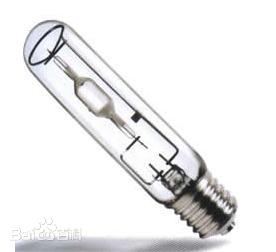
Characteristics of Ceramic Metal Halide Lights
With the advancement of social science and technology, the advent of ceramic metal halide lamps is the most eye-catching achievement in the development of HID light sources in recent years. Because of the great breakthrough in the research of polycrystalline alumina (PCA) ceramic material and its sealing process with metal, people have succeeded in manufacturing a ceramic shell whose performance is significantly better than that of a metal halide lamp with a quartz glass shell. The use of ceramic material as the outer shell avoids the loss of metal materials in the lamp, and the size of the electric isolated tube can be controlled very accurately, so the photoelectric performance is consistent and stable, and higher arc temperature is allowed. In 1994, foreign light source manufacturers successfully created ceramic metal halide lamps, which became an important milestone in the development history of electric light sources. Compared with quartz metal halide lamps, ceramic metal halide lamps have the following characteristics:
- Sodium metal will not migrate out of the discharge tube through the ceramic tube,
- The ceramic tube has good chemical stability at high temperature, even if the aluminum metal element appears, it will not affect the performance of the tungsten electrode (because aluminum is difficult to dissolve in tungsten), so that the lamp has a longer life.
- The geometric dimensions of the ceramic tube have high precision, so that the performance of the lamp is consistent.
- The arc tube can work at a higher temperature, and more metal atoms are excited in the arc, resulting in better color rendering and higher luminous efficiency.
- The discharge tube is small in size and the luminous body has high brightness.
- The color temperature has good consistency. Regardless of the change of the power supply voltage, the change of the position of the lamp, and the life of the lamp, the color temperature of the lamp changes very little.
Characteristics of Quartz Metal Halide Lamps
The wall material of the discharge tube of the metal halide lamp has an important influence on its performance. Usually the wall material of the discharge tube is a quartz tube. Under high temperature working conditions, scandium or other rare earths and the quartz tube shell will react to form silicate. And silicon halide. As a result of this reaction, Sc or rare earth metal element silicate is formed on the tube shell, resulting in a reduction of metal elements, causing color drift, and affecting the transparency of the tube shell.
The separated Si element will melt in the tungsten electrode, which will deteriorate the emission performance of the electrode. In addition, the excess halogen makes it difficult to discharge, and produces harmful tungsten halide cycles, corrodes the electrode, blackens the tube wall, and causes light decay.
In addition, some metal ions (such as sodium ions) gradually leak through the tube wall during the ignition process of the lamp life, which will also deteriorate the photoelectric performance of the lamp. The above reasons limit the improvement of the performance parameters and lifespan of the quartz tube metal halide lamp. In summary, the quartz metal halide lamp has the following characteristics.
- The factors that affect the color temperature difference of the quartz metal halide lamp include: grid voltage, lighting angle, halogen content in the lamp, use environment, etc.,
- In order to ensure the color temperature and life of the quartz metal halide lamp, the power supply voltage of the power grid shall not fluctuate more than 5% in a short period of time, and the long-term fluctuation shall not exceed 3%. Larger voltage changes will shorten the life of the light source and the color shift, and the voltage between phases will also cause the color temperature difference of the quartz metal halide lamp.
- The color difference and gradual drift of the single light source of the quartz metal halide lamp during use is a normal phenomenon, especially for low color temperature (such as 3000K). At 5000K, the human eye’s perception of color temperature decreases, which makes people feel that the consistency of color temperature has improved.
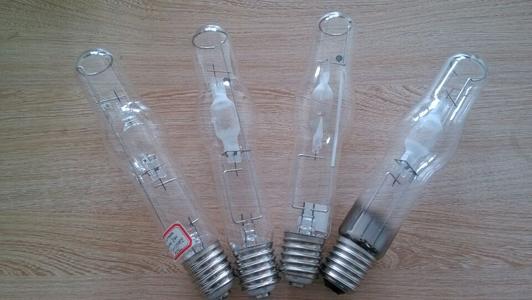
Before the 1990s, lighting products were mainly sodium-scandium metal halide foam, and their color temperature was around 4000K (that is, American standard metal halide foam), so it is difficult to guarantee the consistency of color temperature.
Although the color temperature deviation of the international standard in this respect is +/-300K, this deviation value is easy for people to see the difference in color temperature. Quartz metal halide lamps with a qualified color temperature according to the national standard appear to have a color temperature difference from the two ends of the light source. After multiple light sources are turned on, there will be a color temperature difference.
- Quartz metal halide lamp manufacturers generally have only 30 minutes of aging before the lamp leaves the factory, while other performance problems such as the color temperature of the quartz metal halide lamp are relatively stable and reliable after being ignited for 100 hours.
- In order to ensure the life of the light source, it is required to turn off the quartz metal halide lamp at least once a week.
- In order to ensure the consistency of the color temperature of the light source, it is recommended that the user connect no more than 4 light sources in parallel on the same branch to reduce voltage changes.

